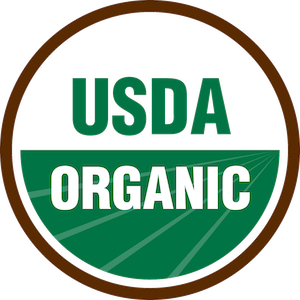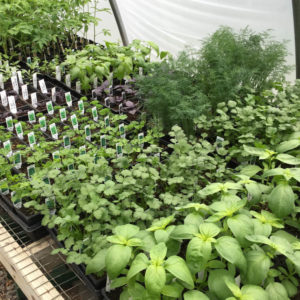Growing Vegetables
Getting a head start
It’s time to plant. We might still be in the throes of arctic chill, but if you’re a farmer and want tomatoes when your customers demand them you’d better get hoppin’. Last week we started onions, a few herbs and the early generation of tomatoes that will be planted in the high tunnel. Of course, this means that we are backsliding into early February, so the greenhouse heater is working overtime.
If you’re a home gardener you can just kick back and wait for us to bring you the plants you need. But even after it’s safe to plant them you will likely have questions about holes in the leaves and the mysterious disappearance of ripe fruit. Well, this is what this section is for. I’ll post planting updates, but feel free bring your own experience and questions. So let’s get started.
Most folks like to start onions with sets. We have been starting ours by seed for the past twenty years. Partly this is due to the organic requirement that we use organic seed stock and partly for variety selection. You never really know what you’re getting when you buy sets.
The process may seem laborious – and it is. But it’s short lived and gives you a chance to day dream about what you’ll be doing after 5:00 pm. The first rule of onion planting is to get new seed. Last year’s seed has lost 80% of it’s germination potential. That’s just the nature of onion seed. Get new every year. The second rule is to plant in small plugs, 2 – 3 seeds per plug. (For non-farmers, flats come in various configurations of individual cells: 72, 98, 128, 218, etc. We generally use 72’s for larger plants like tomatoes and 128 or 218 for crops like onions.) Don’t worry too much about what you have to plant onions into. They’re pretty hardy plants once they germinate and can take some transplant shock as long as they are well watered after transplanting into the garden.
Once onions germinate it will take about four to five weeks for them to be strong enough to plant. Get them in the ground as soon as the weather allows. Onions are a curious species that is on a time clock. Depending on the variety, they will all die back at the same time depending on the day length, so getting them in early will determine how they size up. It’s the day length and not the number of days that is crucial. In the northern parts of the country a long day onion is preferred because we have longer summer days than the south. Sounds counter intuitive, but if you think about it long enough you’ll get a migraine and decide to just take my word for it.
Keep onions well watered and weed free during their main growing season. Weeds can harbor disease because of poor air flow and compete with your crop for nutrients. Compared to other garden plants onions have a very small leaf canopy and need all the help they can get to keep fully exposed to the sun. Also be very careful not to break the leaves. Open wounds are an invitation to disease which often won’t show up until after harvest and curing.
You can harvest onions any time during its life cycle, but if you plan to store them be aware that they will all die back at the same time. Varieties differ on the die back date based on its day length, but when you see the tops going brown and bending over you’ll know that they’ve stopped growing and are close to being harvested. Bending over the tops manually helps speed this process up.
Once most of the tops have fallen over and are mostly brown pull them all from the garden. Onions are best cured on an open rack, in a single layer with plenty of air circulation. They can take a little sunlight to help the process along, but remember that this is likely going to be the hottest time of the summer and direct, constant sunlight can actually cause sunburn or literally cook the onion. If the onion starts turning green (chlorophyll pigmentation) on its exposed side that’s an indication that it’s getting too much sun. Cut the excess leaf off once it’s fully cured and make sure the neck is perfectly dry. If there is any oozing from the onion that’s an indication that there may be a disease problem or it’s not fully cured. Use these onions first before they start rotting.
By now you’re pretty bored reading about onions, except for those few uber gardeners who want more information than they can handle at one time. So I’ll leave it here to start the discussion – if there is one. I could go on about onions until you cry for mercy.



